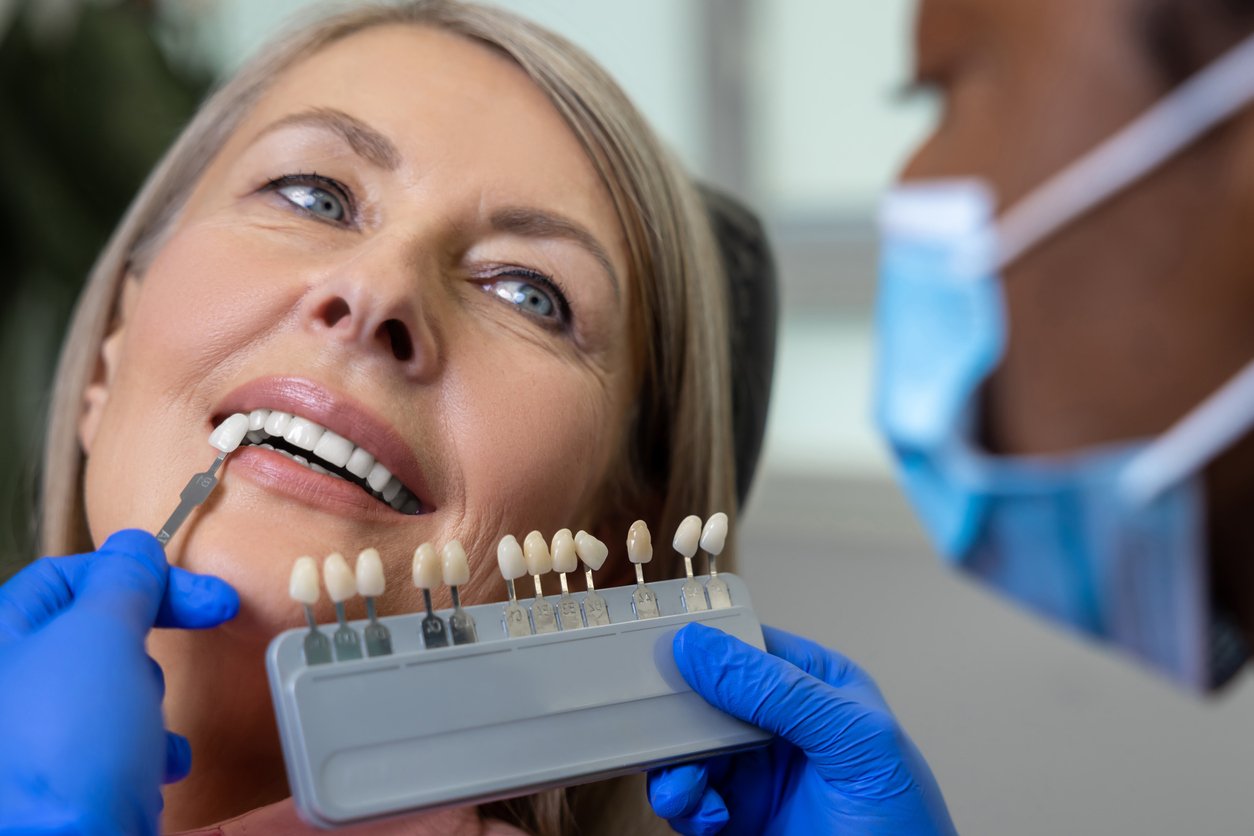
Services
Cosmetic dentistry
Composite Bonding
Composite bonding is a dental procedure used to improve the appearance of teeth by applying a tooth-coloured resin material to the tooth's surface. It is commonly used to repair chipped, cracked, or discoloured teeth, as well as to close gaps between teeth and reshape them for a more aesthetically pleasing smile.
The process typically involves the following steps:
Preparation:
The dentist will examine the tooth and prepare it by lightly etching its surface to create a better bonding surface for the composite resin.
Bonding: The dentist will apply a bonding agent to the prepared tooth. This helps the composite resin adhere to the tooth.
Composite Application: The dentist will carefully apply layers of tooth-coloured composite resin to the tooth, sculpting and shaping it to achieve the desired appearance.
Curing: Once the composite resin is applied, a special light is used to harden and cure the material, bonding it securely to the tooth.
Shaping and Polishing: After the resin has hardened, the dentist will further shape and polish the composite to blend seamlessly with the natural teeth and ensure a smooth, natural-looking finish.
Veneers
Veneers are thin, custom-made shells crafted from tooth-colored materials (usually porcelain or composite resin) designed to cover the front surface of teeth to improve their appearance. They are commonly used to address a variety of dental imperfections, including stains, chips, cracks, misalignment, and gaps between teeth.
The process of getting veneers typically involves the following steps:
Consultation and Examination: During the initial consultation, the dentist will examine the patient's teeth, discuss their concerns and goals, and determine whether veneers are the right option for them.
Preparation: To prepare the teeth for veneers, a small amount of enamel is usually removed from the tooth's surface. This helps create space for the veneer and ensures a proper fit.
Impression: Once the teeth are prepared, the dentist will take impressions or digital scans of the teeth. These impressions are used to fabricate custom-made veneers that are tailored to the patient's individual needs and desired aesthetic outcome.
Temporary Veneers (Optional): In some cases, temporary veneers may be placed on the teeth while the permanent veneers are being fabricated in a dental laboratory. These temporary veneers protect the teeth and give the patient an idea of what the final result will look like.
Bonding: Once the permanent veneers are ready, the dentist will carefully bond them to the front surface of the teeth using a special adhesive. The veneers are then adjusted and polished to achieve a natural-looking and comfortable fit.